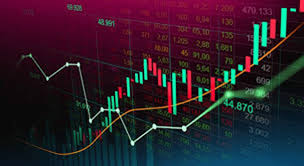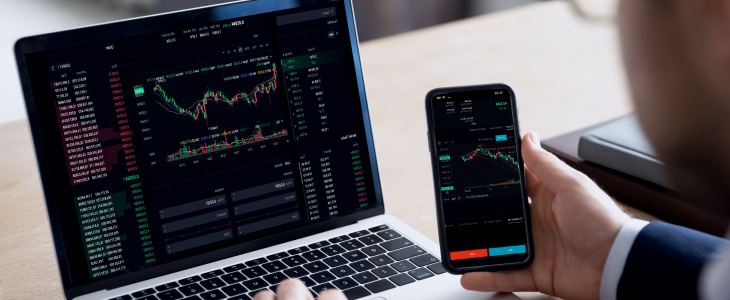
Forex Trading Explained: A Comprehensive Guide
Forex trading, also known as foreign exchange trading, allows traders to buy or sell currencies on the global market. This marketplace is the largest and most liquid financial market in the world, where traders participate in the exchange of one currency for another. Understanding the mechanics of forex trading is essential for anyone looking to enter this dynamic field. In this article, we will provide a clear explanation of forex trading, including its key components, strategies, and tips for beginners. In case you need more resources, you can visit forex trading explained FX Trading UZ.
What is Forex Trading?
Forex trading involves the simultaneous buying of one currency and selling of another. It operates on a decentralized market where currencies are traded against one another. Each currency pair consists of a base currency (the first currency in the pair) and a quote currency (the second currency) that indicates how much of the quote currency is needed to purchase one unit of the base currency. For example, in the EUR/USD pair, EUR is the base currency, and USD is the quote currency.
The Mechanics of Forex Trading
Forex trading is conducted through a network of banks, brokers, and financial institutions via electronic trading platforms. The trading sessions align with the major financial centers around the world, including London, New York, Tokyo, and Sydney. This decentralization allows trading to occur 24 hours a day during weekdays, providing flexibility for traders across different time zones.
Understanding Currency Pairs
Currency pairs are categorized into three main types:
- Major Pairs: These involve the most traded currencies and include pairs like EUR/USD, GBP/USD, and USD/JPY.
- Minor Pairs: These do not involve the USD and include pairs like EUR/GBP, AUD/NZD, and GBP/JPY.
- Exotic Pairs: These consist of one major currency paired with a currency from a developing nation, such as USD/TRY or EUR/ZAR.
How Trading Works
When a trader believes a currency will appreciate in value, they will buy that currency (go long). Conversely, if they believe it will depreciate, they will sell it (go short). Each trade involves the use of leverage, which allows traders to control larger positions with a smaller amount of capital. However, while leverage can amplify profits, it can also significantly increase losses, making risk management strategies a crucial part of forex trading.
Market Analysis Methods
Successful forex trading relies on comprehensive market analysis. There are three primary types of analysis that traders apply:
1. Fundamental Analysis
This method involves analyzing economic indicators, news events, and geopolitical developments that may influence currency values. Key indicators for forex trading include interest rates, inflation rates, employment data, and GDP growth. Traders who use fundamental analysis focus on how these factors will impact the supply and demand for currencies.

2. Technical Analysis
Technical analysis relies on the study of price charts and historical market data to predict future price movements. Traders use various tools and indicators, such as moving averages, MACD, RSI, and Fibonacci retracement levels, to identify trends and potential entry and exit points in the market.
3. Sentiment Analysis
Traders often consider the overall sentiment of the market, which reflects the collective emotions and attitudes of traders toward a particular currency pair. This can be gauged by analyzing trader positioning, news sentiment, and survey data. Understanding market sentiment can aid in making more informed trading decisions.
Forex Trading Strategies
Having a solid trading strategy is essential for success in the forex market. Here are some effective strategies used by traders:
1. Day Trading
Day trading involves entering and exiting trades within the same trading day. Day traders focus on short-term price movements and often rely on technical analysis to make quick trading decisions.
2. Swing Trading
Swing trading involves holding positions for several days to capture price fluctuations. Traders using this strategy often employ a combination of technical and fundamental analysis to identify potential opportunities.
3. Scalping
Scalping is a high-frequency trading strategy that aims to profit from minor price changes. Scalpers make numerous trades throughout the day, holding positions for only a few seconds to a few minutes at a time.
Risk Management in Forex Trading
Risk management is a core component of successful trading. Here are some essential risk management techniques:
- Set Stop-Loss Orders: Automatically close a losing trade at a predetermined price level to limit losses.
- Position Sizing: Determine the appropriate amount of capital to allocate for each trade based on risk tolerance.
- Diversification: Spread investments across different currency pairs to reduce risk exposure.
- Maintain a Trading Journal: Keep track of all trades to analyze performance and refine strategies.
Conclusion
Forex trading can be a rewarding yet challenging endeavor. With the right knowledge, strategies, and risk management practices, traders can navigate this complex market effectively. Whether you choose to engage in day trading, swing trading, or any other style, continuous education and adaptation to market conditions are key to long-term success. As you embark on your forex trading journey, consider exploring resources and platforms that can enhance your learning experience.


